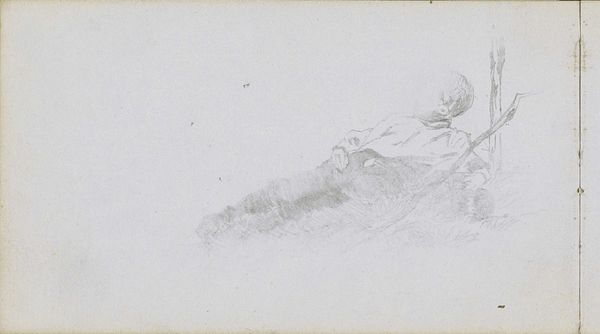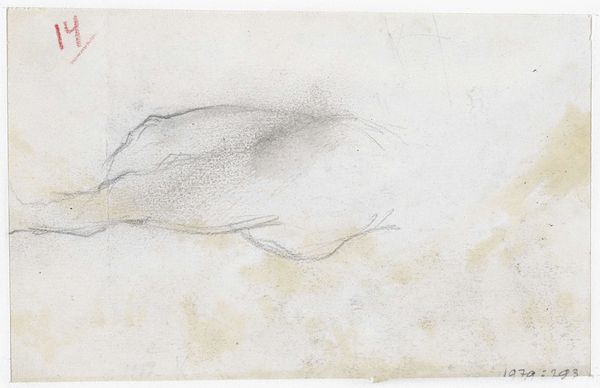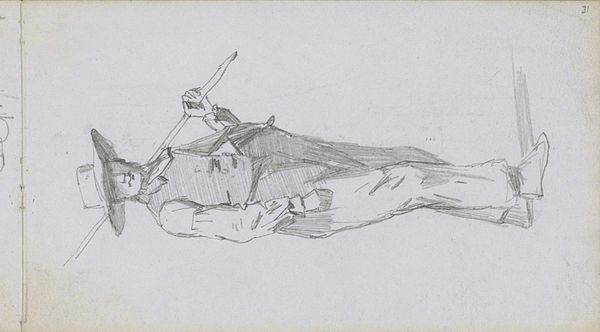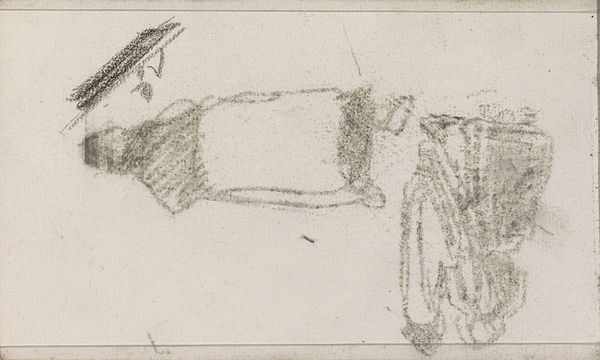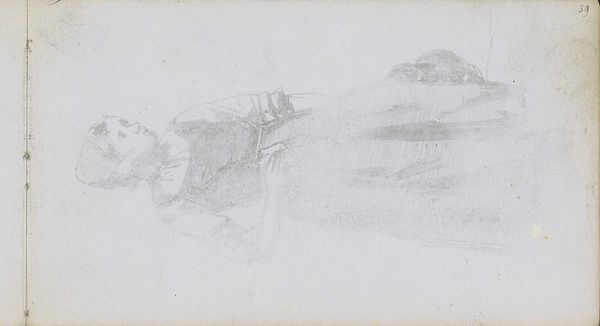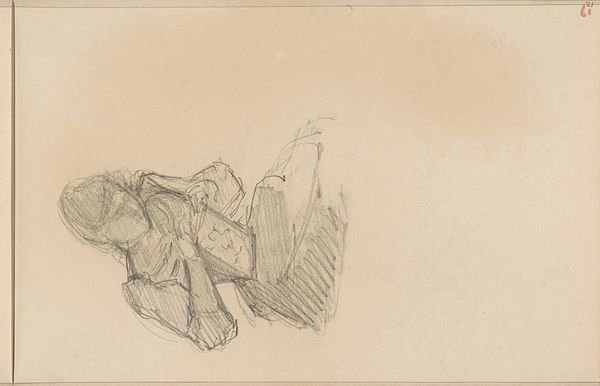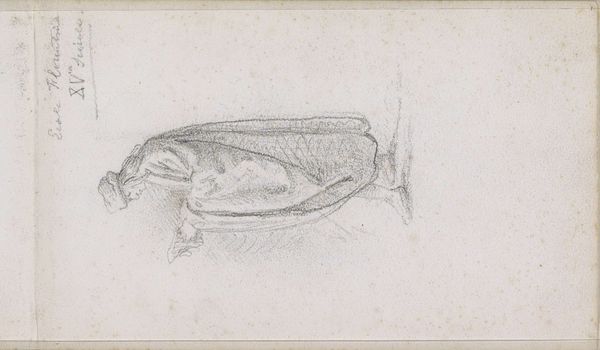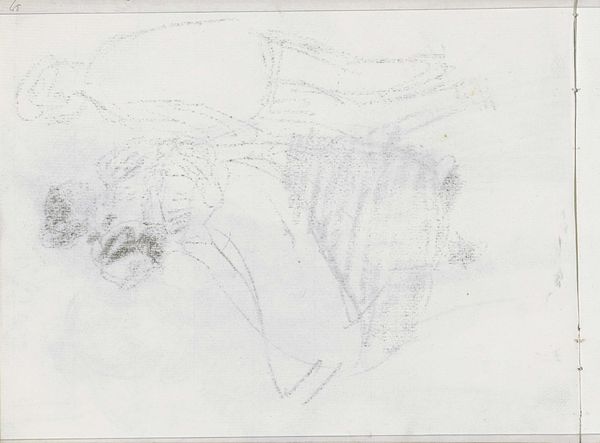
drawing, paper, pencil, graphite
#
portrait
#
pencil drawn
#
drawing
#
amateur sketch
#
light pencil work
#
pencil sketch
#
incomplete sketchy
#
figuration
#
paper
#
personal sketchbook
#
pen-ink sketch
#
pencil
#
graphite
#
sketchbook drawing
#
pencil work
#
sketchbook art
Copyright: Rijks Museum: Open Domain
Editor: Here we have "Abklatsch van de tekening op pagina 36 verso," a pencil and graphite drawing on paper by Johan Hendrik Weissenbruch, created sometime between 1834 and 1903. It seems almost ghostly, a fleeting image captured in very light pencil strokes. What draws your eye when you look at it? Curator: I see the labor of sketching, the repetitive marks, the way the pencil is pressed onto the paper. It makes me think about the artist's hand, the very act of creation, and how that connects to a larger network of material production and consumption in 19th-century art. How was the graphite sourced, the paper milled? What kind of studio practices were enabled or restricted by the availability and cost of these materials? Editor: So you’re less interested in the subject and more in the "stuff" of the artwork itself? Curator: Precisely. And not just the raw materials but also the social and economic context in which these materials were made available. This sketch, born from readily available materials, allows an intimacy often unseen within, say, an oil painting of that period. It brings into view the casual labor and the less formal methods by which art-making occurs. How does its accessibility influence the way art was taught, created, and disseminated in 19th-century Netherlands? Editor: That’s fascinating. I was so focused on interpreting the figure, but I hadn't considered the story the materials themselves could tell about the time. Curator: Exactly! Think of the rise of industrial production, impacting every aspect of daily life, even the tools an artist uses. What new creative avenues were forged in response? Editor: I will never look at a pencil drawing the same way again! Considering the context of its making really deepens my understanding of it. Curator: Agreed. It allows a critical re-evaluation of art history through a material lens, highlighting how social forces interact with the creation of art.
Comments
No comments
Be the first to comment and join the conversation on the ultimate creative platform.
